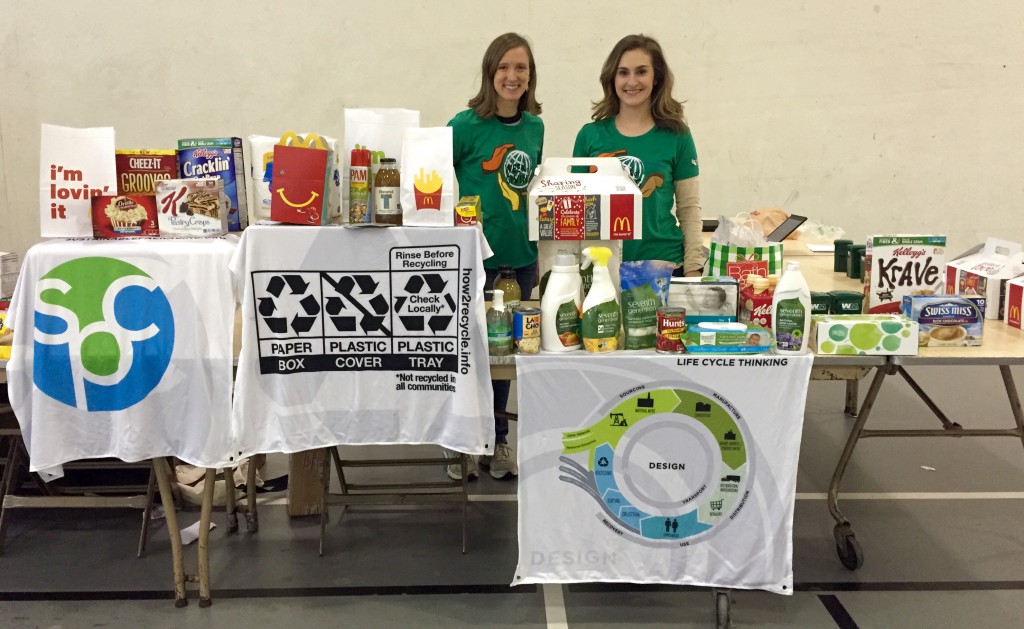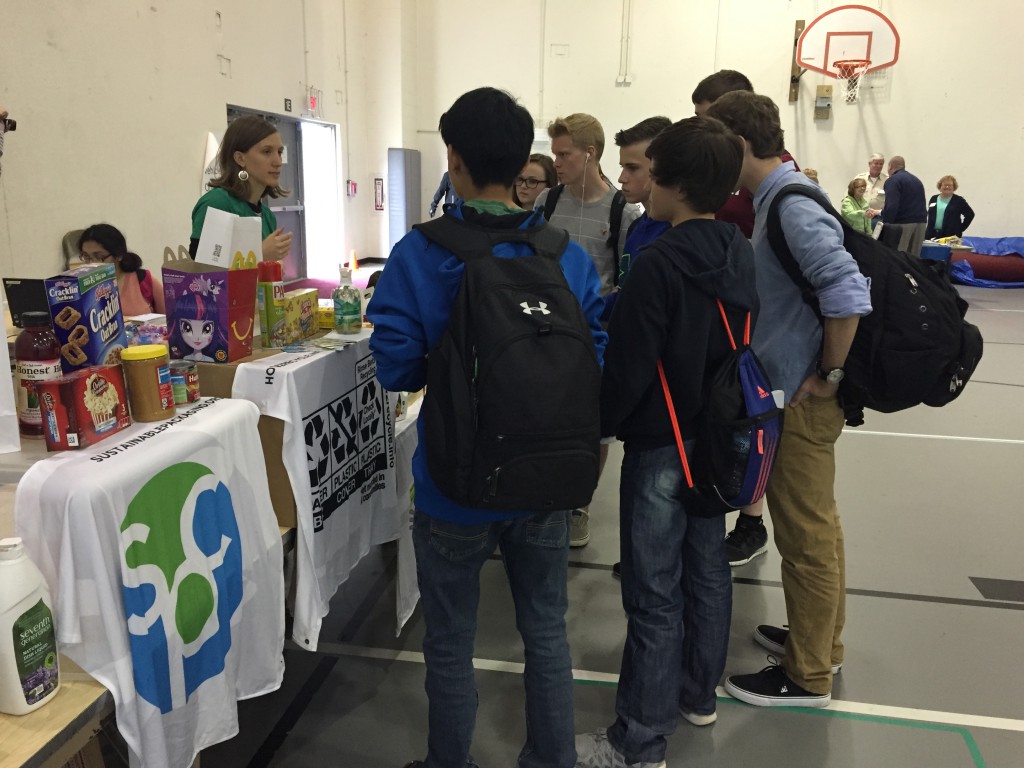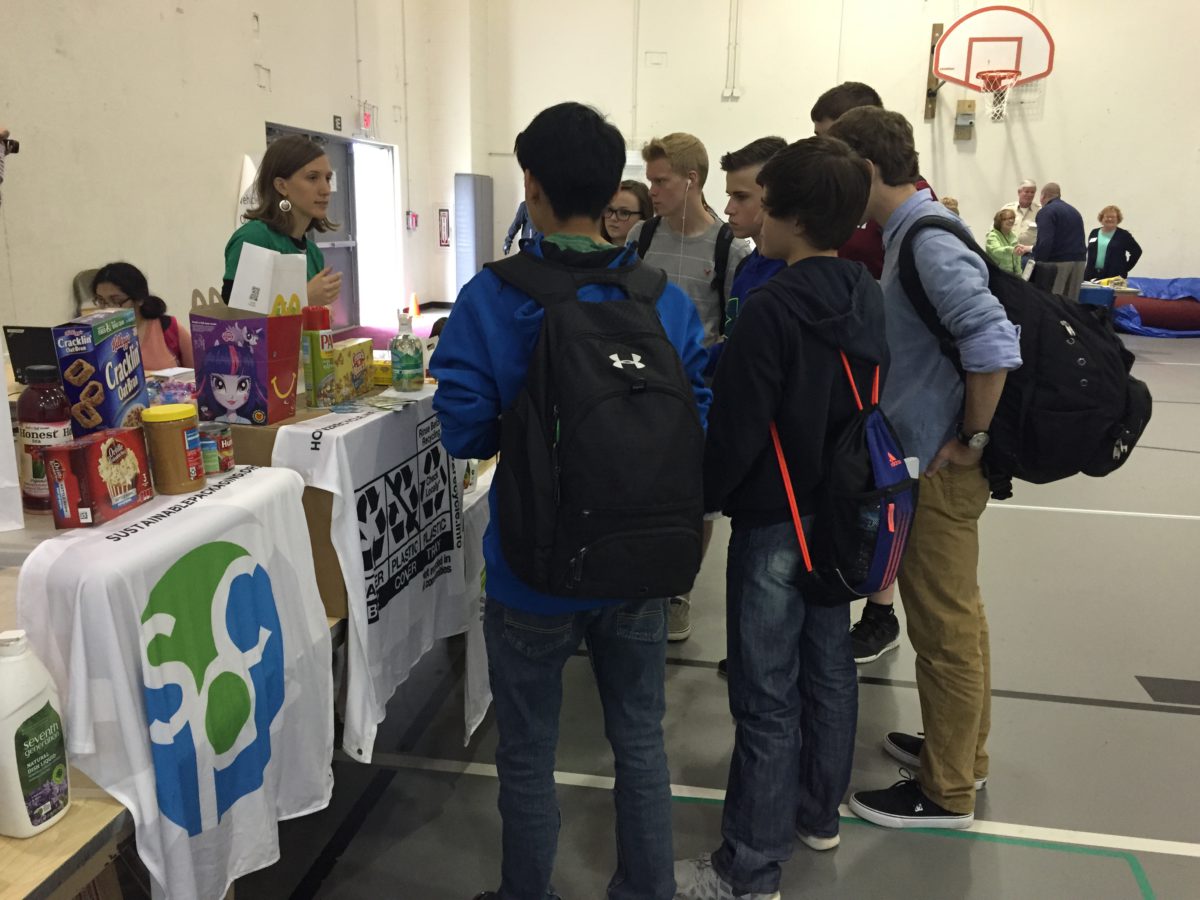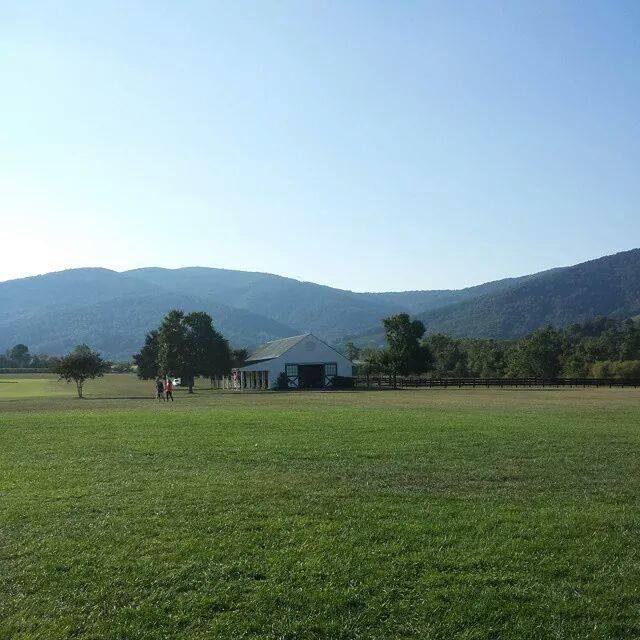
“Can I have a Pop Tart?”
This is one of the many questions I received while representing the SPC and my company, HAVI Global Solutions, at Antioch High School’s Earth Day fair in northern Illinois. I prepared for the fair by purchasing high school-friendly products that use the SPC’s How2Recycle Label. (The Pop Tarts, McDonald’s, and Keebler Fudge Sticks were a hit, particularly since the fair was at lunch time). The packages in the photo below are just a sampling of the items that now contain the label.
I have been working with the SPC on the How2Recycle Label for a few years now, so I consider myself to be pretty educated on the program and on recycling generally. However, I was struck by how much I learned as I looked at the various labels. For instance, without the How2Recycle Label present, I wouldn’t have known to keep the cap on the glass Honest Tea bottle or to keep the sprayer on the Seventh Generation cleaning spray.
The high school students ambled by and many looked at us skeptically as we asked them what they would do with a cereal box when they were done with it. Thankfully, this question was too easy for most of them as they knew to recycle the box. Then we asked about the plastic bag that held the cereal inside the box. This time, they were caught off guard and looked uncertain. Two out of the 200+ students and teachers that came by our booth got the right answer. Once we showed them the How2Recycle label on the cereal boxes, they were able to see that they could bring the cereal bag back to a store to place in the plastic bag recycling bins. The American Chemistry Council graciously provided magnets and notepads that we gave to students to bring home and educate their families about film recycling.
We were happy to teach the students something new and we left with some insights of our own. Some thoughts:
- People think they know a lot about recycling — and many of them do. The students were more educated about recycling than many of the older people we have talked to, which is great news. However, they don’t know everything. This is where the How2Recycle Label can be helpful.
- When people think they already know about recycling, they don’t necessarily want to learn more and may not check the package for additional information. The more easily the consumer can see the label, the easier it will be for them to recycle properly, even if they don’t actively look for recycling instructions. Special shout out to Seventh Generation for doing a great job on large, high-visibility labels and not being afraid to use the ‘Not Yet Recycled’ label.
- When high school students have to squint to read the How2Recycle Label, it’s probably too small. I think it’s great that it is on there at all, but if 16 year olds can barely read it, it’s probably not big enough for my 94-year-old grandmother.
- Incentives help a lot. Thanks to McDonald’s, the ACC, and Seventh Generation, we were able to give out some freebies to students who took the survey. Although we may not be able to give a S’mores Pop Tart to everyone each time they recycle, it is a reality that people are more likely to do something if they get something from it. We know that “Pay as you throw” policies aren’t a panacea, but they do provide economic incentive to recycle and thus increase recovery rates. Check out AMERIPEN’s 2013 White Paper for more information on this.
On a non-recycling note, this experience reminded me the importance of thinking big, even if an opportunity may be a long shot. Brenda Herman is a student at Antioch High School who reached out to the SPC without having any contacts there, asking if they would come to her high school’s Earth Day fair. The SPC is based in Virginia, so a staff member was unable to attend, but we were still able to have a presence at the high school since I am a local Executive Committee member. Thanks to Brenda for reminding us to take risks and ask questions!
 Thanks also to HAVI Global Solutions for the priority placed on employees getting into communities and helping people. We have a popular annual tradition called the Week of Giving, which encourages employees to take time out of their work day in order to give back to our community. Through this program, we were able to participate in the Earth Day fair. These kind of activities help strengthen social capital, fostering the often-ignored social pillar of sustainability.
Thanks also to HAVI Global Solutions for the priority placed on employees getting into communities and helping people. We have a popular annual tradition called the Week of Giving, which encourages employees to take time out of their work day in order to give back to our community. Through this program, we were able to participate in the Earth Day fair. These kind of activities help strengthen social capital, fostering the often-ignored social pillar of sustainability.
So, Readers: go connect with your community and share your sustainability expertise! Take a step away from our bubble filled with acronyms and technical jargon. You have plenty to teach and you’ll learn a lot as well.
Amy Duquette, SPC Executive Committee Member & Sustainability Project Manager for HAVI Global Solutions













